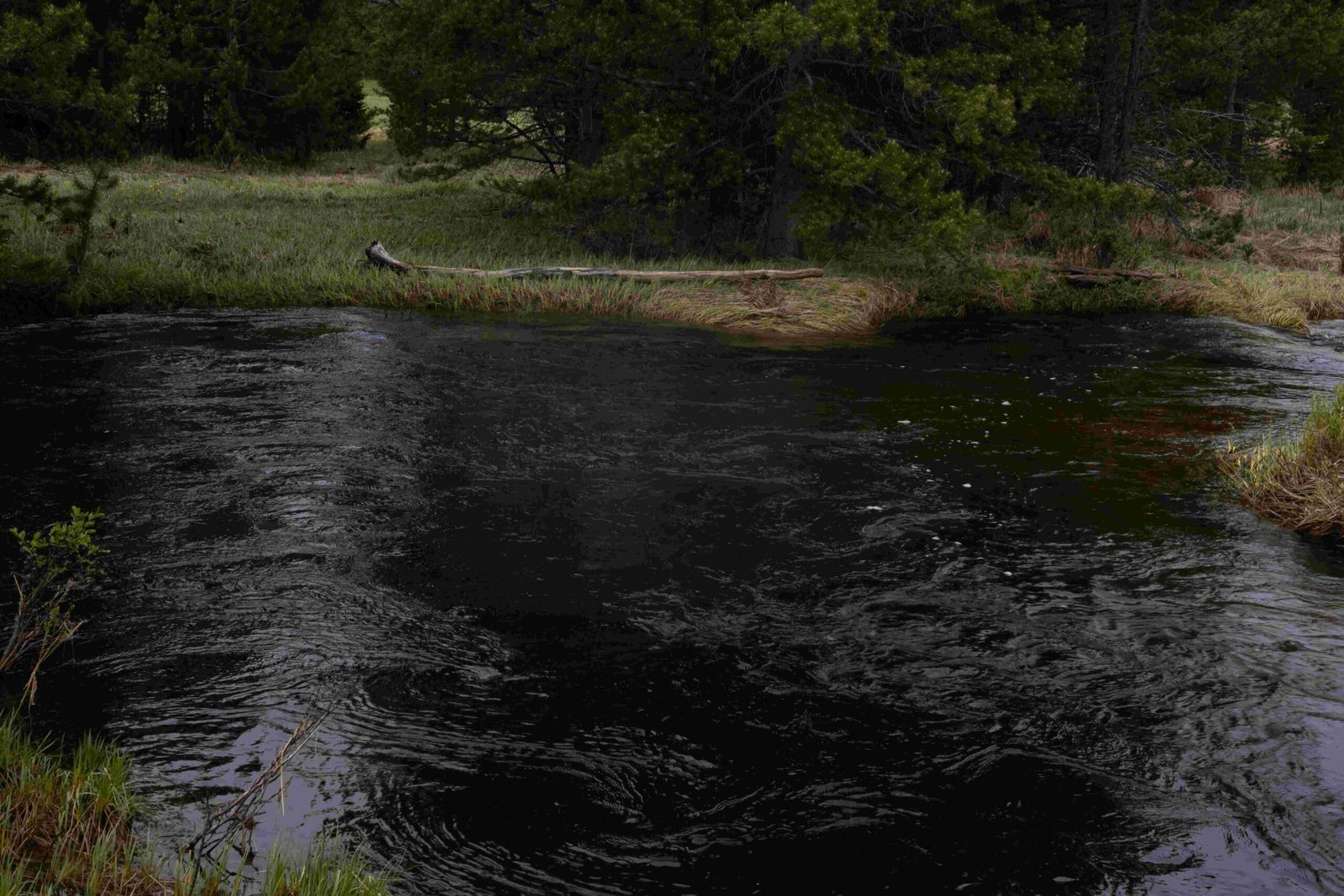Peacock Pool in Rocky Mountain National Park is a stunning alpine lake nestled beneath the towering Longs Peak. This hidden gem is part of the challenging Chasm Lake Trail, offering hikers breathtaking views of Columbine Falls and the surrounding tundra. The pool’s crystal-clear waters reflect the rugged beauty of the Rocky Mountains, making it a popular destination for adventurers and photographers alike. Despite its allure, Peacock Pool remains a less-crowded alternative to some of the park’s more famous lakes.
What is the Trail Like to Reach Peacock Pool?

The journey to Peacock Pool is part of the Chasm Lake Trail, a demanding hike that rewards visitors with spectacular alpine scenery. Here are the key details:
- Total Distance: 8.4 miles round trip
- Elevation Gain: 2,390 to 2,589 feet
- Difficulty: Challenging
- Starting Point: Longs Peak Trailhead
The trail begins in a subalpine forest and gradually ascends into the alpine tundra. Hikers will encounter:
- Rocky basins
- Stream crossings
- Potential snowfields (early summer)
- Rock scrambling sections
As you approach Peacock Pool, the terrain becomes more challenging, requiring careful footing and route-finding skills. The final stretch involves navigating rocky terrain, but the views of Columbine Falls and the pool itself make the effort worthwhile.
What Makes Peacock Pool Unique?

Peacock Pool stands out among Rocky Mountain National Park’s many water features for several reasons:
- Dramatic Setting: Nestled beneath the imposing Diamond Face of Longs Peak
- Columbine Falls: The cascading waterfall that feeds the pool
- Alpine Tundra: Surrounded by delicate high-altitude ecosystems
- Reflective Waters: On calm days, the pool mirrors the surrounding peaks
- Less Crowded: Offers a more secluded experience compared to popular spots like Dream Lake
The pool’s location along the Chasm Lake Trail means that many hikers pass by without realizing the beauty that lies just off the main path. This relative obscurity adds to its charm for those in the know.
When is the Best Time to Visit Peacock Pool?
The ideal time to visit Peacock Pool depends on your goals and preferences:
| Season | Pros | Cons |
|---|---|---|
| Summer (July-August) | – Peak wildflower blooms – Warmest temperatures – Least snow cover |
– Afternoon thunderstorms – More crowded trails |
| Early Fall (September) | – Fall colors – Fewer crowds – Stable weather |
– Colder temperatures – Possible early snow |
| Late Spring/Early Summer (June) | – Snowmelt feeds waterfalls – Fewer people |
– Snowfields on trail – Colder water temperatures |
For photography, early morning offers the best light and calmest conditions. The golden hour just after sunrise can create stunning reflections on the pool’s surface.
What Wildlife Might You Encounter at Peacock Pool?
The alpine environment around Peacock Pool is home to a variety of hardy wildlife species:
- Yellow-bellied Marmots: Often seen sunbathing on rocks
- American Pikas: Small, rabbit-like creatures that gather plants for winter
- Bighorn Sheep: Occasionally spotted on nearby cliffs
- White-tailed Ptarmigan: Well-camouflaged birds that change color with the seasons
- Golden Eagles: May be seen soaring above the peaks
Remember to observe wildlife from a distance and never feed the animals. The alpine ecosystem is fragile, and human interference can have lasting impacts.
How Can You Prepare for a Hike to Peacock Pool?
Given the challenging nature of the trail, proper preparation is essential:
- Start Early: Begin your hike at dawn to avoid afternoon thunderstorms
- Pack Essentials:
- Plenty of water (at least 3 liters per person)
- High-energy snacks
- Sun protection (hat, sunscreen, sunglasses)
- Warm layers (temperatures can drop rapidly)
- Rain gear
- Wear Appropriate Footwear: Sturdy hiking boots with good ankle support
- Acclimate to Altitude: Spend a day or two at lower elevations before attempting the hike
- Check Weather Forecast: Be prepared to turn back if conditions deteriorate
- Inform Someone: Let a friend or family member know your hiking plans
What Photography Tips Can Enhance Your Peacock Pool Experience?
Capturing the beauty of Peacock Pool requires some planning and skill:
- Timing is Key: Early morning light provides the best conditions for reflections
- Use a Polarizing Filter: This can enhance the blue of the sky and reduce glare on the water
- Bring a Tripod: Essential for low-light shots and long exposures of Columbine Falls
- Wide-Angle Lens: Helps capture the expansive landscape and towering peaks
- Include Foreground Elements: Use rocks or wildflowers to add depth to your compositions
- Experiment with Shutter Speeds: Slow shutter speeds can create silky effects on the waterfall
Remember to practice Leave No Trace principles and avoid trampling vegetation while seeking the perfect shot.
How Does Peacock Pool Contribute to the Park’s Ecosystem?
Peacock Pool plays a vital role in Rocky Mountain National Park’s alpine ecosystem:
- Water Source: Provides drinking water for wildlife
- Habitat: Supports aquatic insects and amphibians
- Plant Life: Surrounding area hosts unique alpine flora
- Erosion Control: The pool and its outflow help regulate water runoff
- Climate Indicator: Changes in the pool can signal broader climate trends
Understanding the pool’s ecological importance can enhance appreciation for this natural wonder and encourage conservation efforts.
By exploring Peacock Pool, visitors to Rocky Mountain National Park can experience a less-traveled gem that showcases the raw beauty of the alpine environment. Whether you’re a seasoned hiker, a nature photographer, or simply someone seeking solitude in the mountains, Peacock Pool offers a rewarding adventure for those willing to make the journey.
References:
1. National Park Service – Hike to Chasm Lake
2. Backpacker – Chasm Lake Trail in Rocky Mountain National Park
3. Colorado Trail Explorer – Chasm Lake Hike

